Tested: 2015 Beta Range
Transmoto’s Europe-based off-road gun for hire, Llewelyn Pavey, throws a leg over the 2015 Betas at the international launch to offer this top-line insight into the Italian manufacturer’s new two- and four-stroke enduro offerings.
Beta’s recent Enduro World Championship (EWC) success with Johnny Aubert, Luis Correia, Deny Philippaerts, Giacomo Redondi and Danny MCCanney has certainly cemented the Italian brand as a serious player on the international enduro bike stage, and they sure smashed the ball out of the park when they introduced their first ever two-stroke models in 2013. But on the four-stroke front, there have been calls that Beta’s bikes are overdue for an update and the introduction of fuel injection to keep pace with their race-bred competition. Well, the four-strokes appear to have been the focus for Beta’s 2015-model upgrade program.
So, let’s look at exactly what Beta’s design team has delivered with their 2015 range of two- and four-strokes, and how that translates into the bikes’ ride.
The four-strokes were due an update, but did they bring in EFI?
Beta has made the leap into the depths of the EFI pool, but they’ve definitely kept the armbands on. They Italian company only fitted an electronic fuel injection system to their 350RR, claiming they want to perfect it on that one model before changing the entire range. They’ve jumped in with the Synerject system that Sherco used on their SEF300. Utilising Synerject’s clever bypass system, Beta’s 350 has been designed to significantly reduce engine braking (which is specifically adjustable using Synerject’s tuning software).
To my mind, the 350 is the pick of the four-strokes; it is a really impressive and versatile bike and the engine is now in a similar mould to its KTM rival. It’s a little smoother and torquier than the Kato, but it’s still happy to rev and be thrown around, and is no doubt a bike for the masses. The minimal engine braking on the new bike felt odd at first, but it lets you carry a lot of corner speed and reduces the rear-end’s tendency to step out under braking. It’s a unique feature that you’ll either love or hate.
For a more detailed assessment of Beta’s new RR350 – which is really the flagship for the brand’s new model-range – check the piece that Llewelyn Pavey penned for Transmoto’s long-time associates over at www.enduro21.com.
And what about the other four-strokes?
Well, the R&D department has either been smoking a few reefers, or they’re actually onto something. Beta has decided that the best direction to head was lighter and easier to ride. Those are solid principles, but they’ve achieved this by reducing the capacity of the bikes to what they claim are optimal. The other three four-strokes have lost height and weight to the conrod to reduce both capacity and rotating mass. All the four-strokes get die-cast, re-engineered, stronger crankcases, too. The overall weight loss was over a kilo from each motor and the model sizes are now 390, 430 and 480. For me, the 390 is a bit of a non-event; it just wasn’t happening. The gearing is odd, the power is flat, and there wasn’t a situation where the 430 wasn’t better. In contrast, the 430RR (the revamped 450) is good. That slightly smaller engine works; it’s easy to turn and it handles well. The engine has plenty of power and an efficient, smooth delivery. I’d be surprised if it was much slower than its rivals, too. Finally the 480 – as with all the new Betas – is easy to ride. For an open-classer, it is very manageable in the trees. It does push the front a little more than the smaller capacities – okay, there isn’t a big-bore four-stroke that doesn’t – and I wouldn’t surprised if the Beta isn’t the best handling in the class. All round, it’s a good effort.
And the 2015 two-stokes?
Beta hasn’t sat still with their two-strokes since the start. The 250 gets an modified power-valve design to improve the power delivery, a new model-specific exhaust design to create an even more linear power, and the 300 gets the engine from the 2014 ‘Factory Edition’. That means it has a different exhaust outlet diameter, tweaked power-valve design and a different combustion chamber profile over the ’14. The two-stroke models’ power has been marginally improved, but the biggest improvement came when more tension was applied to the power-valves. Initially they were a little too aggressive and felt like the gear ratios weren’t right, but smoothing out the delivery by turning the power-valve spring 180 degrees clockwise altered the bikes infinitely for the better.
The Sachs suspension has always been a talking point with the Beta range. So, any differences?
This is a yes and no situation. The Italians love their Sachs and they love their soft valving. Beta made some small internal developments to improved quality and efficiency at both ends through a new piston design. In regards to the riding feel, it’s marginally better than it was a couple of years ago, but really it’s too soft everywhere and this holds the bikes back in the hands of a decent rider. It’s the weakest element of the range because when the bikes are pushed, they tend to deflect and feel nervous, and bottom-out much too easily.
What ETA and pricing can the Australian market expect?
According to Beta Motorcycles Australia’s Gary Grealy, “The 2015 bikes will be in Australian dealers by early September. The pricing of the two-strokes will remain unchanged, while there may be a slight increase – approximately $100 – across the four-stroke range. That’s not a lot when you consider the 350 gets EFI and that all the other four-stroke models get the completely re-engineered, second-generation engines, including changes to capacities.”
2015 BETA UPGRADES…
FOUR-STROKES
- All the new “Gen 2” engines have undergone extensive re-engineering to make them more powerful, with the reduction in engine capacity reducing weight by 1 to 1.5kg.
- The RR350 only gets a Synerject electronic fuel injection system with 42mm throttle body, and an adjustable stepper motor (mounted on the throttle body) that’s designed to minimise low-rev stalls and engine braking.
- The new crankcases are lighter and feature a tighter crank chamber, redesigned crankshaft, simplified oil drive, redesigned water jacket and extra ribbing.
- Shorter, lighter conrods are fitted to decrease engine capacities (the 400, 450 and 500 models now use 390, 430 and 480cc capacities). This also creates a lower centre of gravity and decreased gyroscopic effect.
- There’s a new lighter (but stiffer) “Box-in-Box” piston and DLC treated gudgeon pin.
- The new heads use modified combustion chambers and inlet and exhaust ports.
- A lighter balance shaft.
- A lighter and more powerful starter motor.
- A redesigned air intake tract.
- The 350 and 390 only get a revised camshaft profile and titanium valves.
- The muffler is redesigned to complement the engine mods. Beta claims the engines’ power output remains unchanged from 2014, but all engines are more responsive and boast a more linear torque curve.
SHARED MODS (2T & 4T)
- The 48mm Sachs fork on both the two- and four-strokes gets a redesigned extension piston with “3 slot” geometry for better oil flow, a new spring release support system, modified internals, and new spring profiles.
- The Sachs shock absorber gets a new piston and modified oil galleries, designed to reduce heat build-up and fade-free operation.
- Softer seat foam.
- Handlebar pads.
- New graphics.
TWO-STROKES
- The RR300 gets the new cylinder, combustion-chamber profile and CDI mapping that were used on the 2014-model Factory Edition bike. It’s claimed to improve throttle response and create more linear power.
- The 250 gets significant mods to the power-valve mechanism and a new muffler (with a slightly smaller internal diameter compared with the RR300) for more power at higher revs.
For specs and more on the new range of Betas, click here.
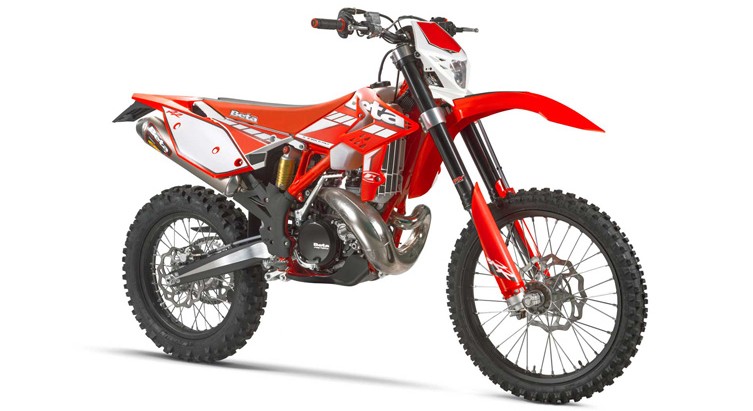
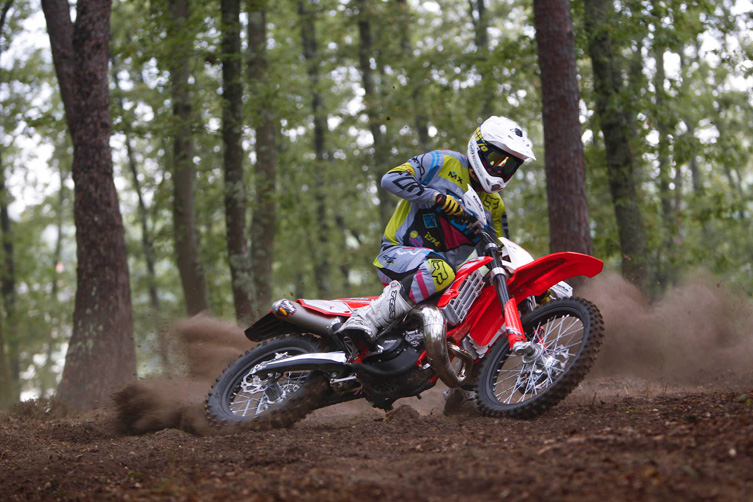
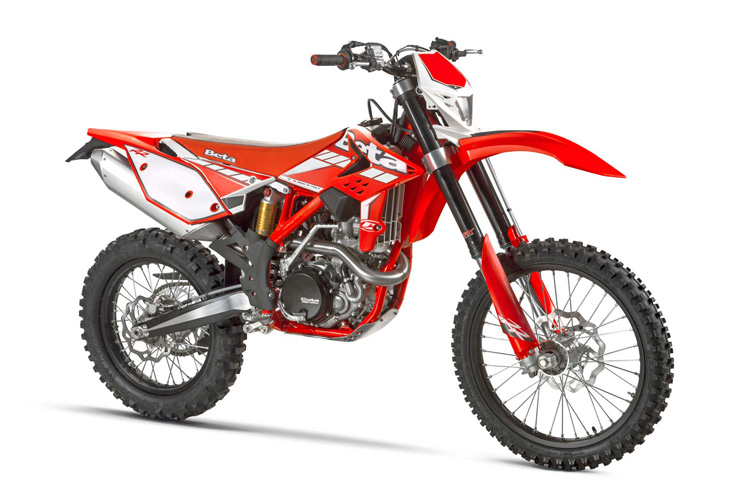
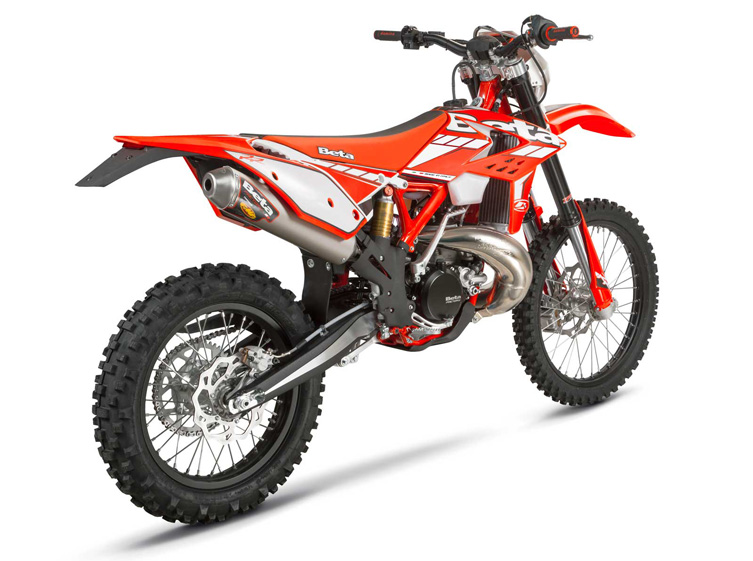
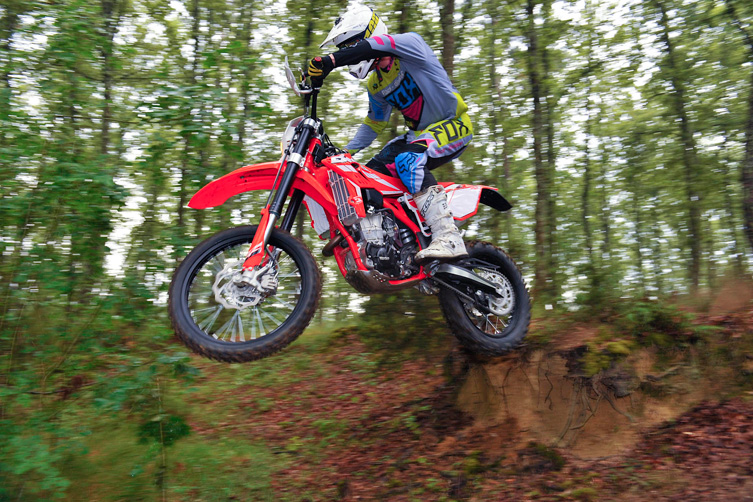
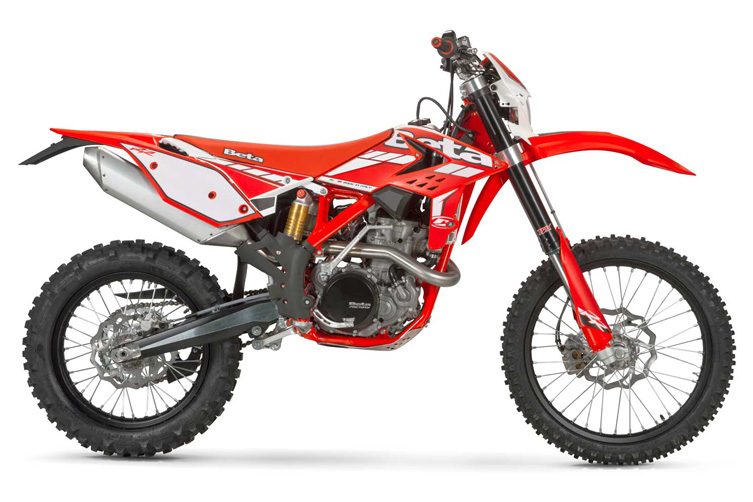
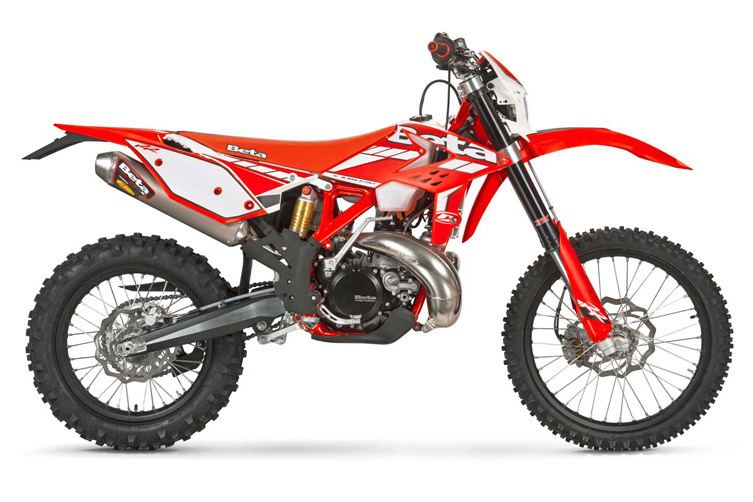







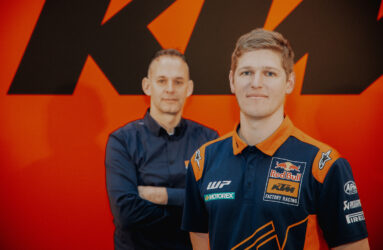
Be the first to comment...